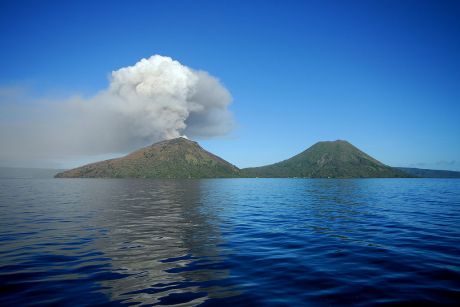Volcanoes, aerosols and climate

Tarvurvur
By Taro Taylor (originally posted to Flickr as Tarvurvur) [CC BY 2.0 (http://creativecommons.org/licenses/by/2.0)], via Wikimedia Commons
To understand changes observed in the aerosol layer of the stratosphere, scientists use remote sensing to collect relevant data. EU funded scientists are now 4D modelling aerosol formation and transport, in particular after volcanic eruptions.
Aerosols are minute particles suspended in the atmosphere up to the
stratospheric layer. These particles interact both directly and
indirectly with the Earth's radiation budget as well as our planet's
climate. The aerosols scatter sunlight back into space and act as sites
for chemical reactions.
Significant evidence indicates that during volcanic eruptions, large amounts of sulfuric gasses are injected into the stratosphere, where they convert to sulphate aerosols. Not surprisingly, the impact of aerosols on incoming solar radiation changes depending on the level of volcanic activity. The EU-funded project MIMOSA-5 (Monitoring and modelling of stratospheric aerosols with a focus on the impact of volcanic eruptions) aims to develop a powerful tool to investigate, monitor and predict all these changes.
Specifically, the Model for Stratospheric Aerosols (MOSTRA), a 4D model based on the transport and the microphysical description of aerosol particles is currently being extended. The model input includes aerosol parameters such as size distribution, composition and extinction coefficients.
During the project's first reporting period, MIMOSA-5 scientists retrieved aerosol data from the observations of the Global Ozone Monitoring by Occultation of Stars (GOMOS) instrument. This atmospheric chemistry instrument forms part of the payload of ESA's Envisat mission.
Available algorithms were utilised, and new dedicated tools developed to convert GOMOS readings into scientific data of parameters representative of the Earth's atmosphere. The significant improvements in the GOMOS scientific data products have rendered them a reference dataset for validation purposes.
The efforts devoted to improving the GOMOS data products will provide the opportunity to further our current understanding of the chemistry of the Earth's atmosphere. The MIMOSA-5 project is expected to demonstrate that 4D models can offer valuable insights into how the Earth's atmosphere evolves in space and time.
published: 2016-01-29

